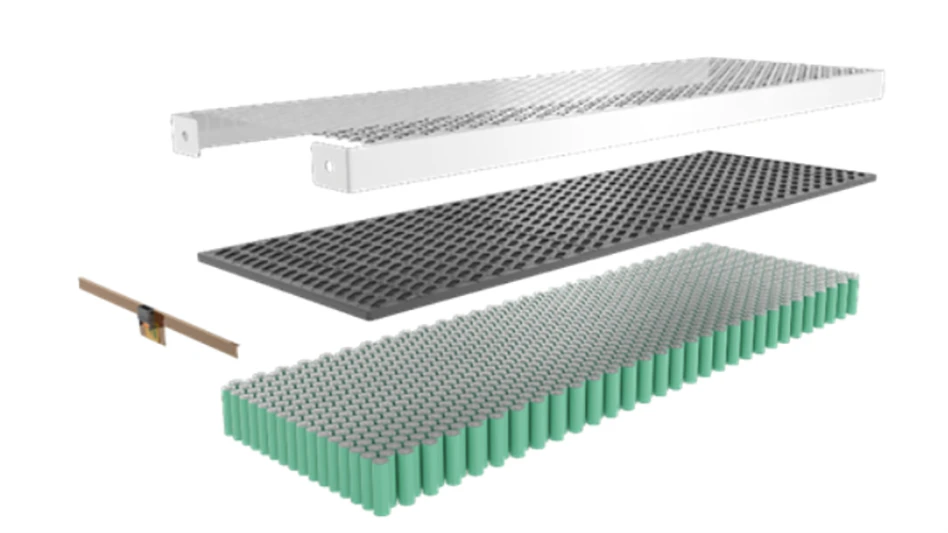
Interplex, a customized interconnect solution provider, has further strengthened its product portfolio of interconnect solutions aimed at use in electric vehicle (EV) batteries. Having already proved popular with battery modules based on cylindrical and standard prismatic cells, the latest Cell-PLX version is specifically optimized for next generation prismatic cells.
Cell-PLX is part of an array of solutions supporting EV battery implementation including battery module enclosures, cooling plates, and busbars. The interconnects leverage the comprehensive vertical integration setting Interplex apart from other suppliers where stamping, molding, assembly (including laser and ultrasonic welding), and testing are covered. The company has maximum scope for engineering innovation so customers can gain access to differentiated products.
Compliant with USCAR 2-6 automotive performance requirements, the Cell-PLX interconnect platform provides data transfer capabilities for constant monitoring of voltage and temperature parameters, with the ability to cover battery module voltages from 12V to above 800V. Thanks to inherent scalability, it can be adapted to suit any battery shape or size, with battery modules consisting of thousands of cells being addressed.
Through the new Cell-PLX offering, Interplex can deal with conventional prismatic cells in plastic carriers, but also the higher-density laminated type prismatic cells EV OEMs are now starting to specify for their battery models. The interconnect solutions can handle current densities up to 15A/mm². Their robustness means they’ll continue to function even when exposed to intense vibrations. They can be supplied with a choice of either aluminum or copper current collecting layers, accompanied by a UL 94 rated dielectric insulation layer. Plastic or metal housing options are available, being produced to the highest levels of precision.
“Incorporating laminated type prismatic cells into EV batteries will mean larger amounts of energy can be stored within a more compact space. This is clearly advantageous, leading to battery modules that have tighter dimensions and are more lightweight,” explains Randy Tan, Product Portfolio Director for Energy, Interconnects at Interplex. “Having an interconnect technology that is purposely aligned with these cells is vital. This should provide superior signal integrity alongside sufficient insulation. In addition, the production processes involved must be ready to attend to customers’ volume demands. However, many suppliers are not yet able to offer this.”
“Now, with the newly released Cell-PLX interconnect systems, we are well positioned to serve automotive OEMs looking to utilize laminated type prismatic cells in their batteries with a flexible, high-volume solution that delivers exceptional performance.”